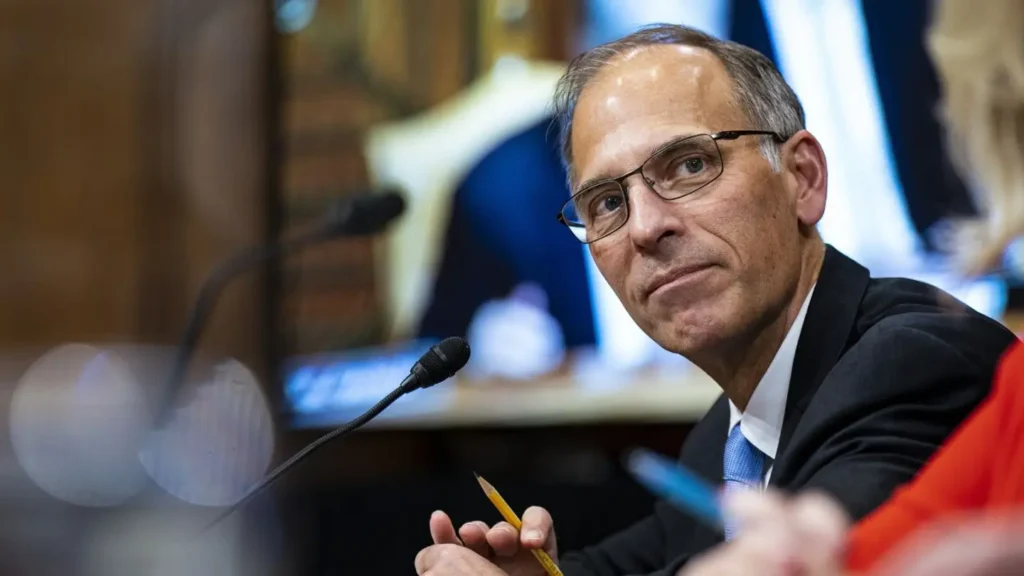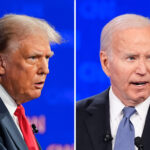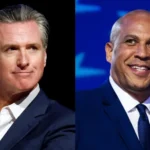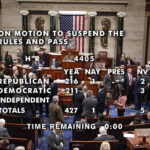Moody’s Mark Zandi: U.S. Facing Possible Recession, Inflation Grow/ Newslooks/ WASHINGTON/ J. Mansour/ Morning Edition/ Moody’s Analytics chief economist Mark Zandi warns the U.S. economy is on the brink of recession, citing a weak July jobs report and rising inflation. Consumer spending has stalled, industrial sectors are contracting, and immigration restrictions are shrinking the labor force. Zandi says escalating tariffs and restrictive immigration policy leave the Federal Reserve with few options ahead of September.

Recession Warning Quick Looks
- Mark Zandi warns the economy is on the “precipice of recession”
- July added just 73,000 jobs with major downward revisions to May and June
- Consumer spending flatlines, while manufacturing and construction contract
- Inflation rising; PCE index grew to 2.6%, overshooting Fed’s 2% target
- Labor force participation shrinking amid restrictive immigration policies
- Tariffs eroding corporate profits and household purchasing power
- ISM services PMI barely stayed in expansion territory at 50.1, with input costs surging
- Experts warn of stagflation risks as inflation and job weakness persist
- Markets now expect a Federal Reserve rate cut in September
- Hiring freezes across services sectors, particularly for recent graduates
Deep Look
Looming Economic Downturn: Zandi Sounds Alarm
Moody’s Analytics Chief Economist Mark Zandi has issued a stark warning: the U.S. economy is teetering on the edge of recession. In a post on X, Zandi cited three red flags—weak labor market data, flat consumer spending, and rising inflation—that together pose a serious challenge for policymakers.
“Consumer spending has flatlined, construction and manufacturing are contracting, and employment is set to fall. And with inflation on the rise, it is tough for the Fed to come to the rescue,” he wrote.
Zandi explained that while the unemployment rate has remained relatively low, that’s because “labor force growth has gone sideways” with the number of foreign-born workers declining along with the labor force participation rate.
Zandi said the tariffs put in place by the Trump administration are having a greater impact on household budgets and corporate profits, while the immigration crackdown has hampered the labor market.
“It’s no mystery why the economy is struggling; blame increasing U.S. tariffs and highly restrictive immigration policy. The tariffs are cutting increasingly deeply into the profits of American companies and the purchasing power of American households. Fewer immigrant workers means a smaller economy,” Zandi explained.
“Any notion that the economic data misrepresents the reality of how the economy is performing is way off base. The data always suffers big revisions when the economy is at an inflection point, like a recession,” Zandi wrote. “It’s thus not at all surprising that we are seeing big downward revisions to the payroll employment numbers.”
Labor Market Weakness Deepens
July’s jobs report revealed only 73,000 new payrolls, far short of the expected 110,000—and revisions to May and June dropped a combined 258,000 jobs, signaling deeper-than-realized weakness. Though the unemployment rate held at ~4.2%, participation declined for a third month, worsened by restrictive immigration policies that are shrinking the labor pool.
Consumer Demand Flat, Sectors Contracting
Consumer spending, the engine behind two-thirds of the U.S. economy, has stalled. Meanwhile, manufacturing and construction sectors are in contraction, and hiring freezes—especially among young graduates—underscore a broader economic slowdown.
Services Sector Slows as Costs Climb
July’s ISM Services PMI sank to 50.1, barely holding onto expansion territory. Business activity and employment indices dropped, while input prices surged to their highest level since 2022, raising fears of hidden inflation embedded in services costs.
Tariffs, Inflation, and Policy Traps
Zandi argues that Trump-era tariffs are chipping away at corporate margins and household budgets, while immigration policies are constraining labor supply—trimming growth potential and pushing inflation higher concurrently. That combination leaves the Fed with few options: easing risks fueling inflation, while tightening risks deepening recession.
Fed Rate Cuts Expected Despite Risks
Markets are now pricing in an 88–90% chance of a 25 bp rate cut in September, with further cuts possible through year-end as policymakers brace for slowed growth and manage inflation fallout. Analysts emphasize that even as inflation stays above target, continued growth risks and labor weakness force the Fed’s hand.
Stagflation Risk Grows
With weak growth and rising prices, analysts warn of stagflation—a stagnant economy paired with persistent inflation. If policy responses falter, the U.S. could face elevated unemployment amid sluggish expansion, a scenario economists say is becoming increasingly likely.







